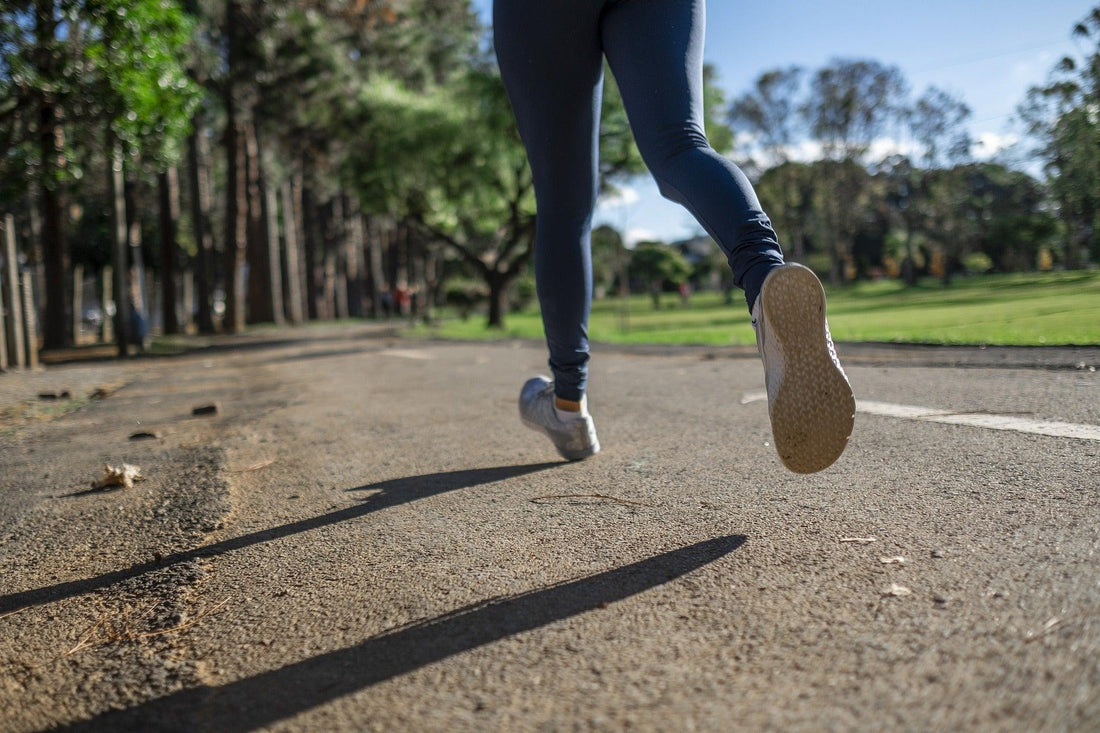What are the benefits of jumping rope? Does jump rope help with running? How far can you push yourself? Athletes always strive to improve from running that mile just a little bit faster to shaving a half-second off their reaction time. Instead of sticking to the same workouts day after day and expecting new results, it may be time to shake up your routine.
Jumping rope provides countless health and fitness benefits, including burned calories, weight loss, strength, and endurance. For athletes, incorporating jump rope drills into your regular workout can help take your skills from good to great. Keep reading to learn how jumping rope can make you faster.
Athletes that Benefit from Jumping Rope
Almost everyone can benefit from jumping rope. Jumping rope is a quick and inexpensive workout that packs a powerful punch. With just a few minutes of jumping, you can burn an impressive number of calories and benefit your body. Best of all, you can jump rope practically anywhere.
For top notch athletes looking to improve their speed, jumping rope can be the answer. The following elite athletes often rely on jumping rope to kick their workouts and performance into high gear.
- Football players
- Runners
- Boxers
- Basketball players
- Sprinters
- And more!
In fact, anyone who needs an efficient cardio workout can benefit from jumping rope. In addition to improving overall speed, jumping rope can increase your agility, stamina, strength, balance, and overall athleticism. For any athlete, those benefits are hard to beat.
Even individuals who are new to working out or starting a new exercise program can reap the rewards of jumping rope. It provides a low impact activity that increases coordination, making it easier to perform other drills and exercises.

How does jumping rope make you faster?
For many athletes, stamina and speed are crucial elements for success. Whether you play football or run daily, strengthening your muscles can improve your overall performance. Jumping rope helps build stamina and increase speed endurance by focusing on the right areas of the body. Using the muscles in your legs, shoulders, and forearms by jumping rope can help you further your endurance for top speeds.
It is also important for athletes to maintain proper spinal alignment and posture when participating in their chosen sport. The right posture makes it easier to achieve top speeds and increase stamina. Jumping rope provides an excellent workout for your glutes, which help make you faster. Runners can activate these muscles to gain more horsepower and increase their speed.
Other benefits of skipping rope are: they can strengthen your ankles, knees, and core as well. Your body performs a triple extension action when you jump rope, which is similar to sprinting. For runners, jumping rope can provide the extra boost needed to take your speed to the next level. For football players, jumping rope improves agility and helps athletes move quicker while reducing stress on the knees.
Finally, athletes can use jump rope drills to support active recovery. In order to make the most of your post-workout time, you need to keep your circulation up while also cooling down. Jumping rope for about 10 minutes can help you recover from a workout. Follow up with stretching to help avoid injuries and relieve the aches and strains on your muscles. A better recovery today makes for a better workout tomorrow.
Top 5 Ways Jump Rope Can Make You Faster
Speed is a coveted attribute in various sports and physical activities, from track and field to martial arts and team sports like basketball or soccer. If you’re looking to enhance your speed and agility, incorporating jump rope into your training regimen can be a game-changer. Here are the top five ways jump rope can make you faster:
1. Improved Footwork and Coordination:
Jumping rope requires precise timing and coordination between your hands and feet. This translates directly into improved footwork and agility. As you master various jump rope techniques, your body becomes more accustomed to rapid, coordinated movements. This enhanced coordination can directly transfer to sports performance, helping you react more quickly to changes on the field or track.
2. Enhanced Cardiovascular Endurance:
Speed isn’t just about sprinting; it’s also about maintaining high-intensity efforts over time. Jumping rope is an exceptional cardiovascular exercise that elevates your heart rate and builds endurance. By regularly engaging in jump rope workouts, you increase your cardiovascular capacity, allowing you to sustain bursts of speed for longer durations, which is essential in sports requiring repeated sprints.
3. Stronger Leg Muscles:
Jumping rope engages the calf muscles, quadriceps, and hamstrings, making it an effective lower-body workout. Over time, this can lead to stronger leg muscles, which are crucial for explosive speed. Strengthened leg muscles provide the power needed to accelerate quickly and maintain a rapid pace.
4. Improved Agility and Reaction Time:
Jump rope training forces you to make quick decisions about when and how to jump, enhancing your agility and reaction time. This heightened agility can be a game-changer in sports where rapid changes in direction and quick responses are essential. The ability to pivot and change direction swiftly can give you a significant advantage in competition.
5. Enhanced Mental Focus:
Speed is not solely a physical attribute; it also relies on mental focus and concentration. Jumping rope requires rhythmic and precise movements, which can help sharpen your mental focus and concentration. This improved mental understanding can be a significant asset when it comes to making split-second decisions and maintaining peak speed during competition.
Incorporating jump rope into your training routine can yield remarkable improvements in speed and agility, whether you’re an athlete or simply looking to enhance your physical fitness. Remember that consistency and gradual progression are key to reaping the full benefits of jump rope training. Start with basic jumps and progressively challenge yourself with more advanced techniques. With dedication and practice, you’ll find that jump rope can be a powerful tool for achieving your speed-related goals.
Jump Rope Drills to Increase Speed
You can just start jumping rope in order to increase your speed, but there are also drills aimed at that purpose. Over time, each athlete will find the routines and drills that work best for their needs, but the following drills can help you get started. Remember not to overdo your workout and listen to your body to prevent injury.
-
Single Foot Hops:
Jump continuously on one foot at a time. After a specific number of jumps or a certain length of time, switch feet. This drill promotes balance and explosiveness for your legs. -
Side-to-Side Jumps:
Skip from side to side while jumping rope. This drill improves your lateral quickness. -
Ali Shuffle:
Jump rope with one foot forward and one foot back. Switch your foot position each time you jump. This drill increases your agility and body control.
Twisters: Keep your upper-body orientation stable while rotating your lower body for each jump. Your hips, knees, and toes will turn from side to side with every jump. This drill helps improve body control and increase speed, even when changing directions.
FAQs on the Ways Jump Rope Can Make You Faster
1. Does jumping rope increase speed?
Yes, jumping rope can increase speed. Jumping rope is a high-intensity cardiovascular exercise that enhances cardiovascular endurance, leg strength, and agility. These physical improvements contribute to an athlete’s ability to move faster, react quickly, and maintain speed over short distances, making it a valuable tool for improving speed in various sports.
2. How long should I jump rope to increase speed?
To increase speed effectively, aim to jump rope for at least 20-30 minutes per session several times a week. This duration allows for a comprehensive cardiovascular workout, muscle conditioning, and improved agility. Consistency and gradual progression in both intensity and duration are key to achieving noticeable speed improvements.
3. What is 10 minutes of jump rope equal to?
Jumping rope for 10 minutes is roughly equivalent to a moderate-intensity cardiovascular workout. It can help burn calories, improve cardiovascular fitness, and engage various muscle groups. The calorie burn from a 10-minute jump rope session varies depending on your intensity and body weight but can range from 100 to 150 calories on average.
4. Does jumping rope help for football?
Yes, jumping rope is beneficial for football players. It enhances agility, coordination, cardiovascular endurance, and leg strength, all of which are essential attributes for success in football. Jumping rope can help football players improve their speed, explosiveness, and overall athleticism. It’s a valuable addition to football-specific training programs.






